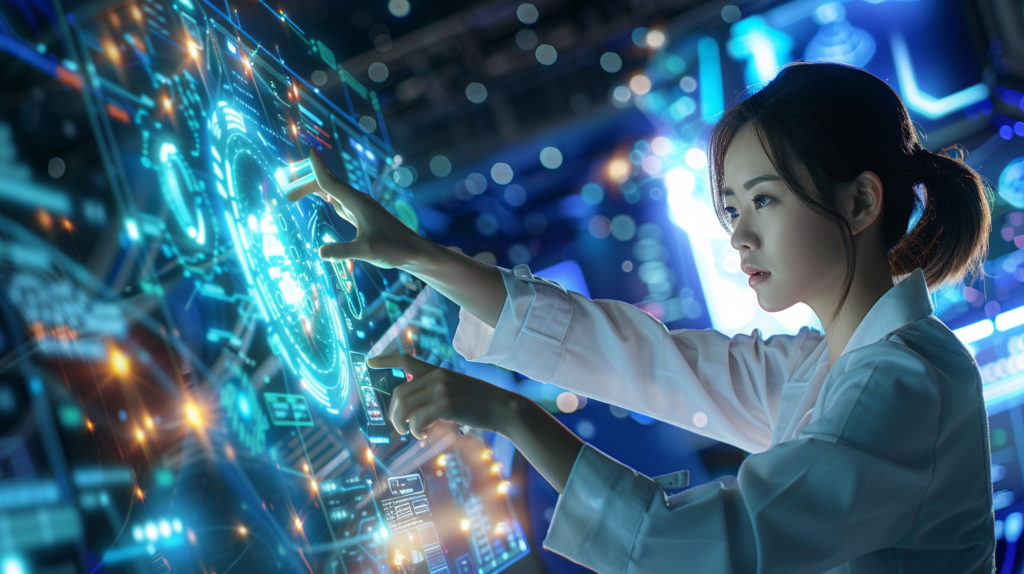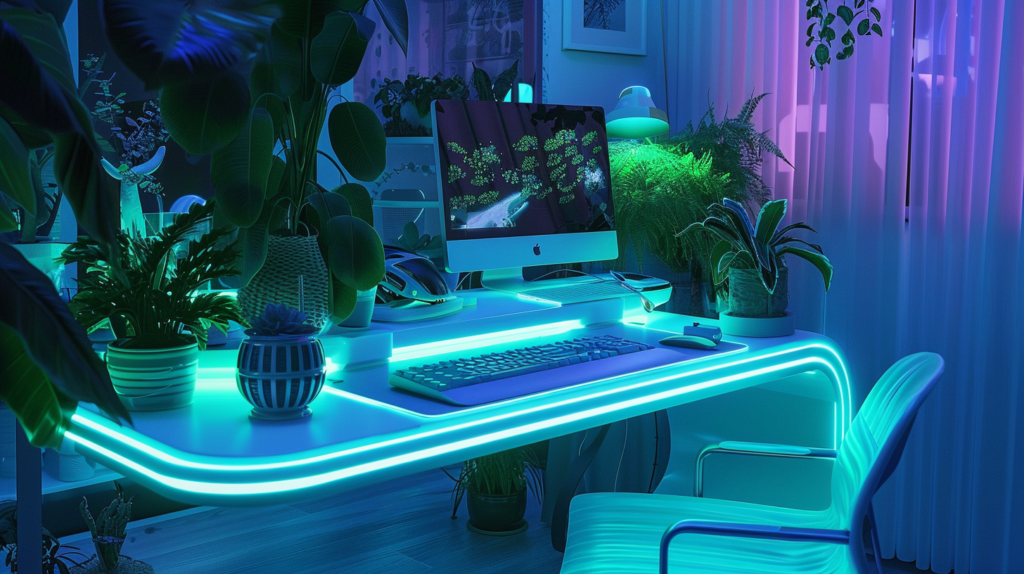As the wheels of digital technology continue to spin at an ever-increasing speed, Artificial Intelligence (AI) emerges as a pivotal driver of transformation. This cutting-edge technology, a unique blend of machine learning capabilities, cognitive computing, and neural networks, presents the promise of revolutionizing a myriad of sectors, User Experience (UX) design being one of the most pertinent among them. This harmonious integration of AI into UX design initiates a novel frontier in the digital world, a frontier that broadens horizons, redefines norms of user interaction, and disrupts conventional paradigms of design. In this comprehensive exploration, we embark on a journey to unravel the influence of AI on UX. From understanding the pivotal elements of this emerging synergy to discussing its potential implications for the future of digital interaction, the article offers an all-encompassing perspective of this transformative crossover.
The implication of AI on a variety of sectors has been a focal point of interest and debate for the past decade. Yet, recent years have witnessed a notable surge in discussions around the integration of AI into UX design. With AI’s exceptional ability to interpret complex data sets, accurately predict user behavior, and automate repetitive tasks, the union of AI and UX design holds enormous potential to dramatically enhance the quality and efficacy of user interactions with digital platforms. This convergence of technology and design goes beyond the mere improvement of efficiency or automation; it is fundamentally aimed at enhancing the realm of human-computer interaction to deliver a more seamless, personalized, and intuitive user experience that aligns with the evolving digital needs of the contemporary user.
The introduction of AI into UX design signifies a profound shift in the way designers approach their craft. The focus of design has moved beyond being merely tool-centric or aesthetically driven; it now places a heavy emphasis on leveraging technology to understand, anticipate, and cater to user needs in a manner that was previously unimaginable. This article deciphers this transition, providing insightful commentary on the intricacies of AI and UX design convergence. It elaborates on how this symbiotic relationship between AI and UX design holds the potential to transform the digital landscape, paving the way for a more user-centric, intuitive, and personalized digital experience.
The Evolution and Revolution of UX Design
UX design has always been an evolving discipline, never content to rest on its laurels. This growth-oriented field continually adapts to emerging technologies, societal shifts, and user expectations to stay ahead of the curve. An earlier exploration into the UX as a vertical illustrated the dynamic nature of UX design and the need for it to stay adaptable in order to thrive in the digital landscape.
Building upon this constant adaptation, we highlighted 12 UX trends for 2023 that mark the current wave of evolution in UX design. From responsive design and voice, user interfaces to the use of augmented and virtual reality in designing experiences, the industry is pushing the boundaries of what’s possible, leading to innovative and highly immersive user experiences.
“UX design is about creating experiences that feel intuitive and natural to users. With the advent of AI, there is an enormous potential to customize and personalize these experiences to an unprecedented degree.” – Alex Hogan
The introduction of AI into UX is not about supplanting the human element of design, but rather about augmenting it. AI serves as a powerful tool that complements the creative efforts of UX designers, enabling them to design more immersive, intuitive, and personalized user experiences. It is the evolution of UX design to embrace AI, a shift that acknowledges the role technology can play in making design more user-focused and less about intuition and guesswork.
AI’s involvement in UX design represents an exciting intersection of technology and creativity. As we venture further into the digital age, this collaboration is becoming increasingly critical. Design is not just about making things look good; it’s also about finding new ways to make users’ lives easier. With AI, UX designers are well-positioned to find innovative solutions to user problems, driving the creation of digital experiences that truly resonate with users by following their natural workflow.
AI: An Unprecedented Ally in the Realm of UX Design
In the realm of UX design, Artificial Intelligence is no longer merely a buzzword. It has emerged as a transformative ally, bringing an entirely new dimension to how UX designers approach their craft. This new perspective has been elucidated in our article ChatGPT creates a BRD and User Stories, where we highlighted the potential of AI, particularly the GPT models, to be a catalyst in redefining the UX design process.
One of the key advantages of AI in the context of UX design is its ability to automate repetitive tasks and streamline the overall design process. AI can help create effective and efficient design systems, eliminating human errors and biases, thereby allowing designers to focus more on the creative aspects of the project.
However, the impact of AI in UX design isn’t limited to the optimization of processes. AI has the extraordinary ability to provide predictive analysis based on user data, which can be invaluable for UX designers. By identifying patterns and analyzing user behavior in real-time, AI can offer insights that help UX designers understand and anticipate user needs better. This facilitates the design of interfaces and experiences that are more in tune with the user’s expectations, thereby enhancing overall user satisfaction and engagement.
Moreover, AI also opens up the potential for proactive design. Instead of reacting to user behavior or feedback, designers can now anticipate user needs and preferences. This predictive capability allows UX designers to make proactive changes, resulting in more user-centric designs that significantly enhance the user experience.
In the ever-evolving digital ecosystem, where user expectations are constantly rising, AI is increasingly becoming an essential tool in the UX designer’s toolkit. It not only aids in the design process but also enriches the overall user experience, ushering in a new era of AI-powered UX design that is more personalized, intuitive, and user-focused.
The Rising Significance of AI in a Digital-First World
The global thrust toward digital transformation has been accelerated by a combination of factors, including shifts in consumer behavior, technological advancements, and global circumstances. This shift, documented in our post The Decline of E-learning: How we lost the magic of instructional design, has necessitated a rapid evolution in digital service delivery. To remain competitive and relevant in this increasingly digital world, businesses are turning to technologies like AI to understand user behavior and deliver personalized digital experiences.
As we navigate this transformation, AI’s role in UX design becomes instrumental. It equips businesses with the ability to create more personalized and user-centric experiences, a necessity in a world where digital competition is fierce and user expectations are high. Here are a few ways AI is transforming UX design:
- Personalization at Scale: One of the most significant advantages of AI is its ability to provide personalization at scale. Unlike traditional methods, AI can process vast amounts of data to provide personalized experiences for each user, transforming the way businesses interact with their customers.
- Data-Driven Decisions: AI’s ability to analyze large datasets quickly and accurately enables UX designers to make informed, data-driven decisions. This helps in designing experiences that are more aligned with user expectations and needs, leading to improved user satisfaction and loyalty.
- Proactive Design Approach: AI’s predictive capabilities allow UX designers to anticipate user needs, offering the opportunity to be proactive rather than reactive. This predictive design approach results in more intuitive and user-centric designs that improve overall user experience and engagement.
The growing importance of AI in UX design signals a broader shift towards more personalized, intuitive, and engaging digital experiences. As AI and UX design continue to intersect, we are moving towards a future where digital experiences will be defined not just by aesthetics, but by their ability to understand and anticipate user needs, delivering highly personalized and satisfying user experiences.
Embracing AI in UX Design: Real-World Applications
As you plan your journey towards mastering this integration, let’s examine some practical ways AI is currently being employed to enhance UX.
Predictive User Experience
One of the most compelling benefits of AI in UX is its ability to predict user behavior. By analyzing past user interactions and behavior, AI can accurately anticipate a user’s next move, creating a seamless and intuitive user experience.
In our post on Mastering Business Presentations: Proven Tips and Tricks, we highlighted the importance of anticipating audience reactions and preparing accordingly. In a similar vein, predictive AI can prepare a system to respond to user actions effectively, keeping users engaged and satisfied.
Customized Content Delivery
AI can also personalize content for each user based on their individual behavior and preferences, resulting in a more tailored UX. The utilization of AI for custom content delivery mirrors the principles we discussed in the article How to Get Your First 10,000 Subscribers on YouTube, where understanding your audience and delivering tailored content is key to success.
Chatbots and Virtual Assistants
The advent of AI-powered chatbots and virtual assistants has ushered in a new era of interactive and engaging user experience. These intelligent systems can provide instant responses, resolve queries, and guide users through complex processes, resulting in an enhanced UX.
Improved Accessibility
AI has also made a significant impact in the field of accessibility. Through technologies like speech recognition and synthesis, AI can make digital platforms more accessible to people with disabilities, thereby enhancing the overall UX.
Future Prospects: AI and UX Synergy
AI is not a magic wand that will instantly perfect UX. It’s a tool—a powerful one—that, when wielded with finesse, can substantially enhance UX. As noted in our article on Harnessing AI’s Potential: Building Your Custom Automated Business, understanding the capabilities and limitations of AI is crucial to its effective deployment.
AI integration with UX design presents an exciting future full of potential:
- Hyper-Personalization: As AI grows more sophisticated, personalization will go beyond surface-level customizations to create deeply tailored experiences that reflect individual user behaviors and preferences.
- Emotion Recognition: Future AI systems might be able to detect user emotions from voice tones, facial expressions, or text input, creating a new dimension in UX design.
- Intelligent Automation: From auto-adjusting interfaces to context-aware notifications, AI could automate numerous aspects of UX, making digital interactions more fluid and natural.
“As UX designers, our job is not to fear the advent of AI but to embrace it. The future of UX lies in our ability to adapt and harness the power of AI to create truly innovative and engaging user experiences.” – Alex Hogan
Conclusion
As we look toward the future, one thing is clear: AI is set to be a significant player in the evolution of UX design. Far from making UX obsolete, AI will augment and enhance UX, providing more personalized, engaging, and intuitive experiences for users. In the words of Alan Kay, “The best way to predict the future is to invent it.” As UX designers, the future is in our hands, and it’s up to us to create it.
So, are you ready to embrace the power of AI and redefine the future of UX design? Be sure to check out our collection on Mastering Presentations for tips on effectively communicating your design ideas, or dive into Writing Tips to hone your ability to express your thoughts and concepts. And, as always, keep exploring, keep learning, and keep innovating.


